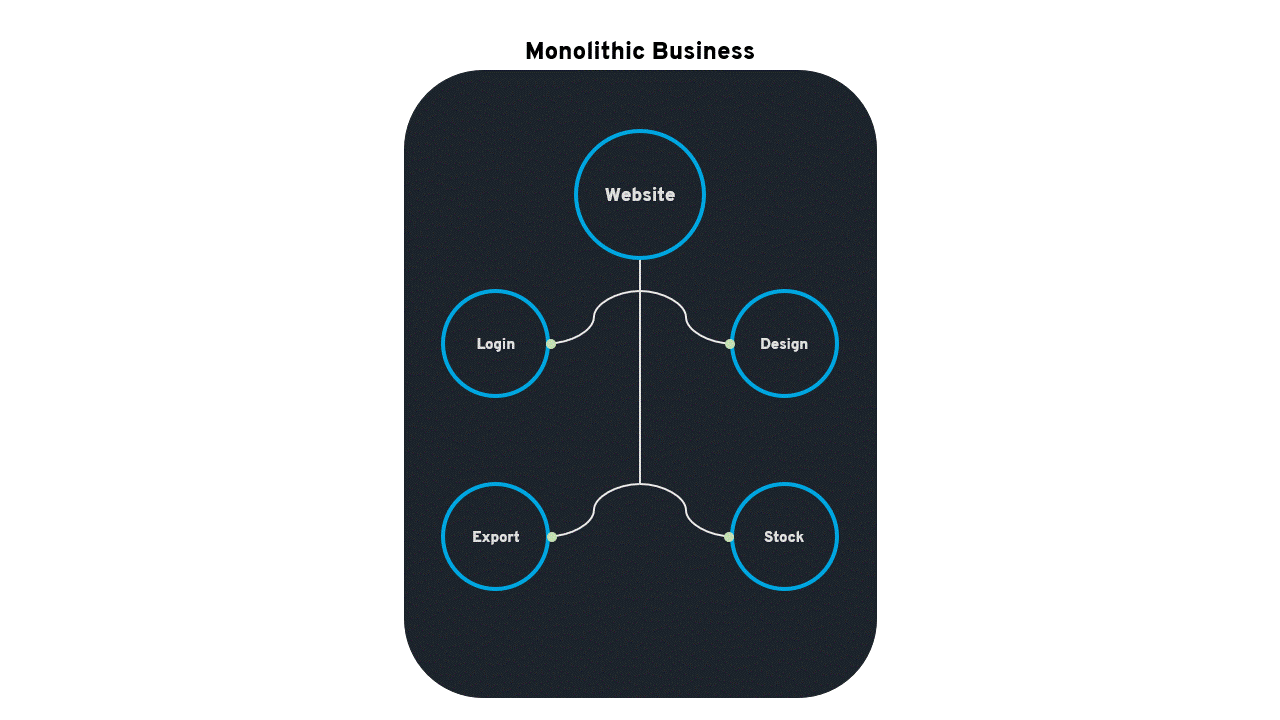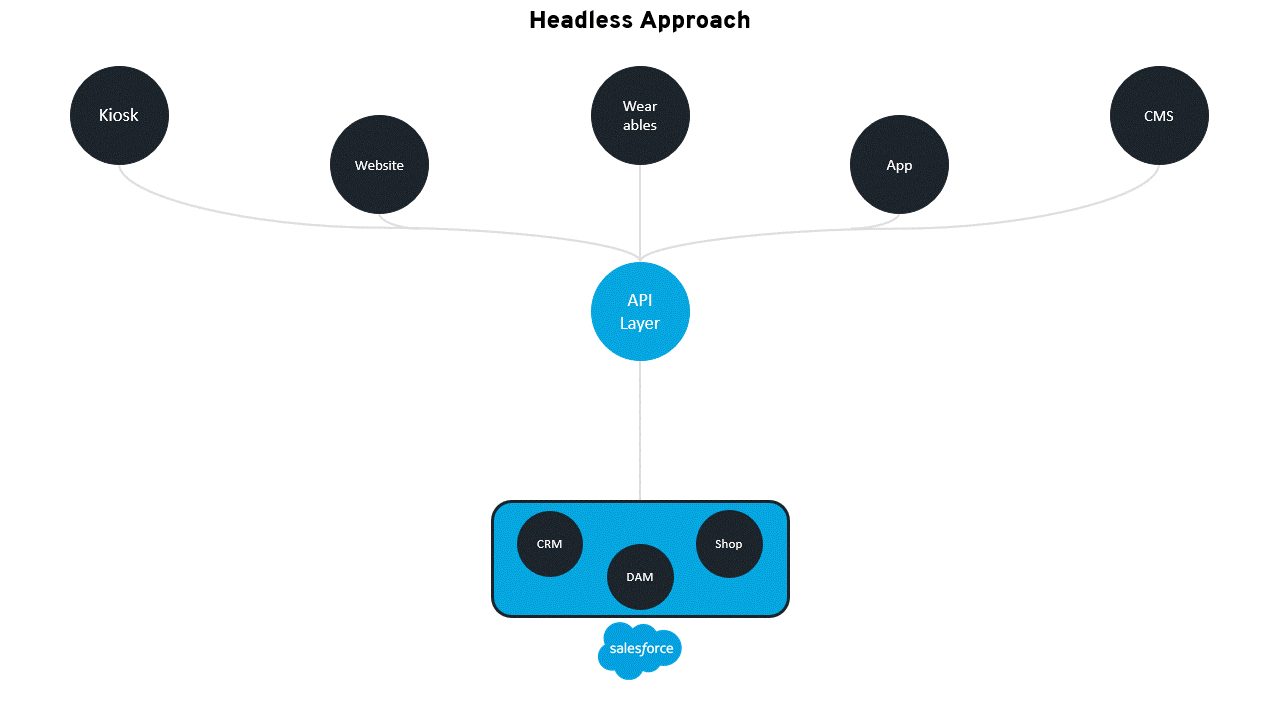We heard it all! Headless is the next best thing for e-commerce.
Back in time
But what makes headless so great? Why would a company want to implement this? Is it only beneficial for the company or also for the customer? In the next read you’ll find out what has changed the last 20 years in e-commerce and what advantages headless could have for your company.
Let’s start about how it used to be. About 20 years ago, we lived in a world where companies only knew monolithic e-commerce platforms. In this world there was only a single-point management of the entire online shopping process for a company. And when these companies had their own management system, most of the time it was hardcoded. But nowadays, companies need to evolve more quickly, adapting as soon as possible to new features, not only hardware related but also software related. If a company wanted their developers to implement a new feature on the website front-end view, they also needed to change the back-end logic to make sure the feature worked properly. The inflexibility of a monolithic e-commerce platform was its biggest downfall.

So why is headless the best solution?
Instead of having one large entity of software logic, headless takes the approach of splitting it up in different smaller entities, also called microservices. For example: The front-end of your website has its own codebase, the back-end product database also has its own codebase, and these codebases can be on different systems.
An API layer provides a common ground for these microservices to communicate and the front-end of your website doesn’t need to connect directly with the back-end anymore. Through the same API layer, the website can also communicate with other services that are configured by the company.
Heaving a headless environment has a lot of pros, but also cons. By spreading entities in to different microservices you have a lot of advantages, here are the main ones:
Faster time to value:
By having different codebases for different projects and/or environments, businesses can deploy more agile. The Return of Investment (ROI) can be achieved more quickly. The different environments don’t need to schedule their releases. The front-end can have a release every Monday morning, but the back-end logic of the website can have its release every month.
The best of many worlds:
Implementing headless in a business means they can be much more flexible in the choices of digital solutions. See what digital solution really suits a company’s business, with having little to no downsides. Which makes it also feature proof. If something new comes out, a company can adapt in an instant and switch from providers if the business solution they chose is lacking something.
Example: You can run the back-end logic of a website on Heroku server hosting platform, run a mongoDB database for your website blog data, use Cloudinary for your large media assets and use Cypres to do end-to-end testing.
Multi-channel delivery:
With a headless approach a business can deliver more consistent content across a lot of platforms. Even with the evolutions of new devices and the way of streaming data, headless helps to adapt more efficiently.
Scalability:
If a company needs to scale their business to their needs, for example having a bigger media storage or more throughput of their customer rate who send a request to the website, it can be easily done with the headless architecture. Downscaling is also no issue.

What are the downsides of headless?
If headless is the perfect son, why aren’t all companies implementing this? To implement headless within a company that has an old way of working, it will not only be time consuming, but also costly to re-code some of its infrastructure. But it is definitely worth it and future proof for your employees.
Where does FORWARD step in?
At FORWARD we strive to help your company grow. As we see the market develop new features and technologies, we make sure to make good use of them and implement them as fast as possible.
As an early adapter of the Salesforce quick-to-headless story, we can help you implement the headless architecture within your business process. We deliver the right tools for your company at your needs. Nothing more, nothing less. Let us help you refactor your website to a PWA managed runtime.
Interested to know more about Headless? Don’t hesitate contacting us!

